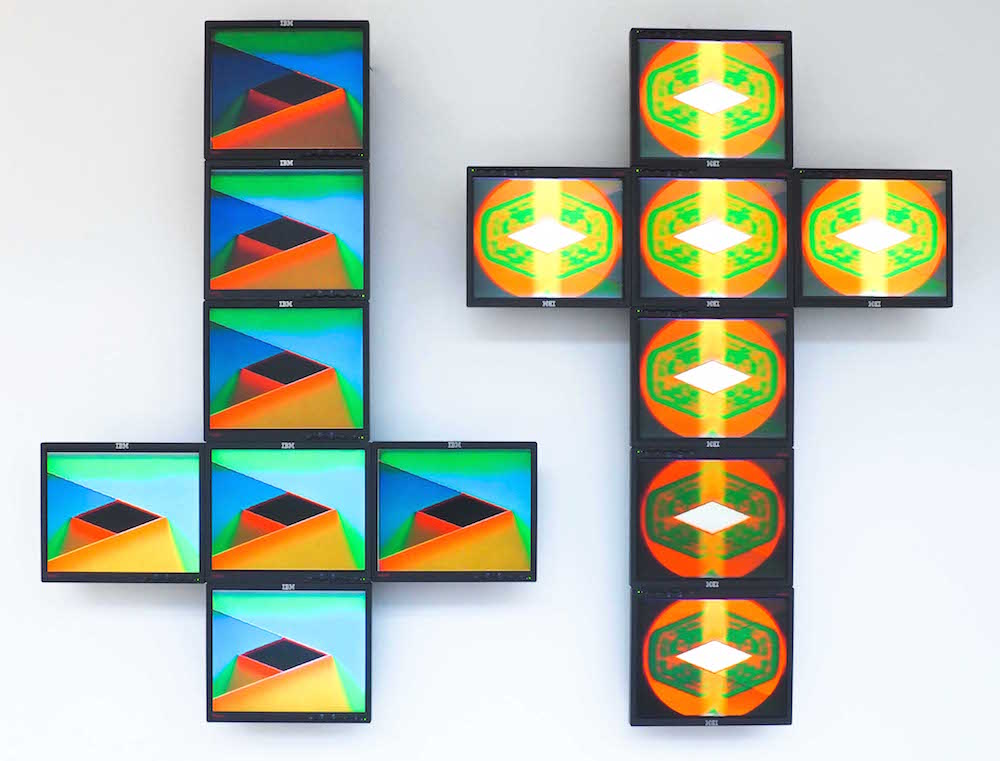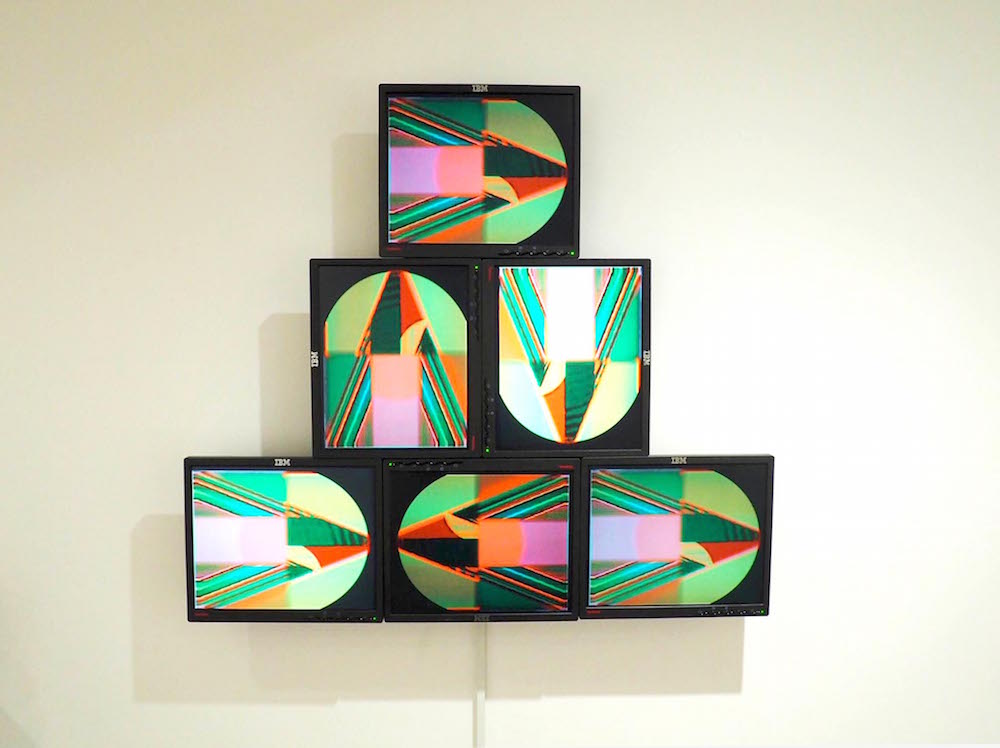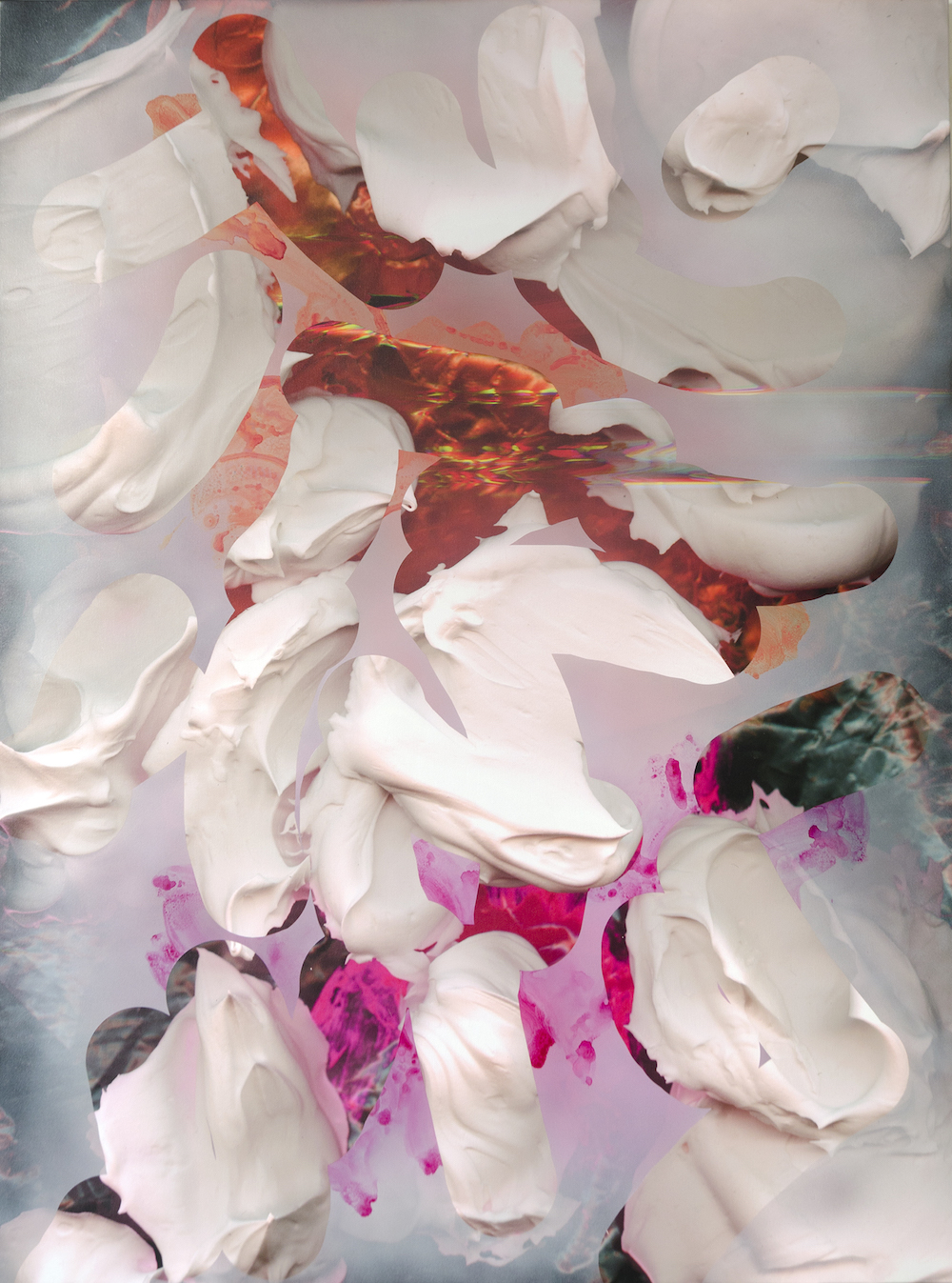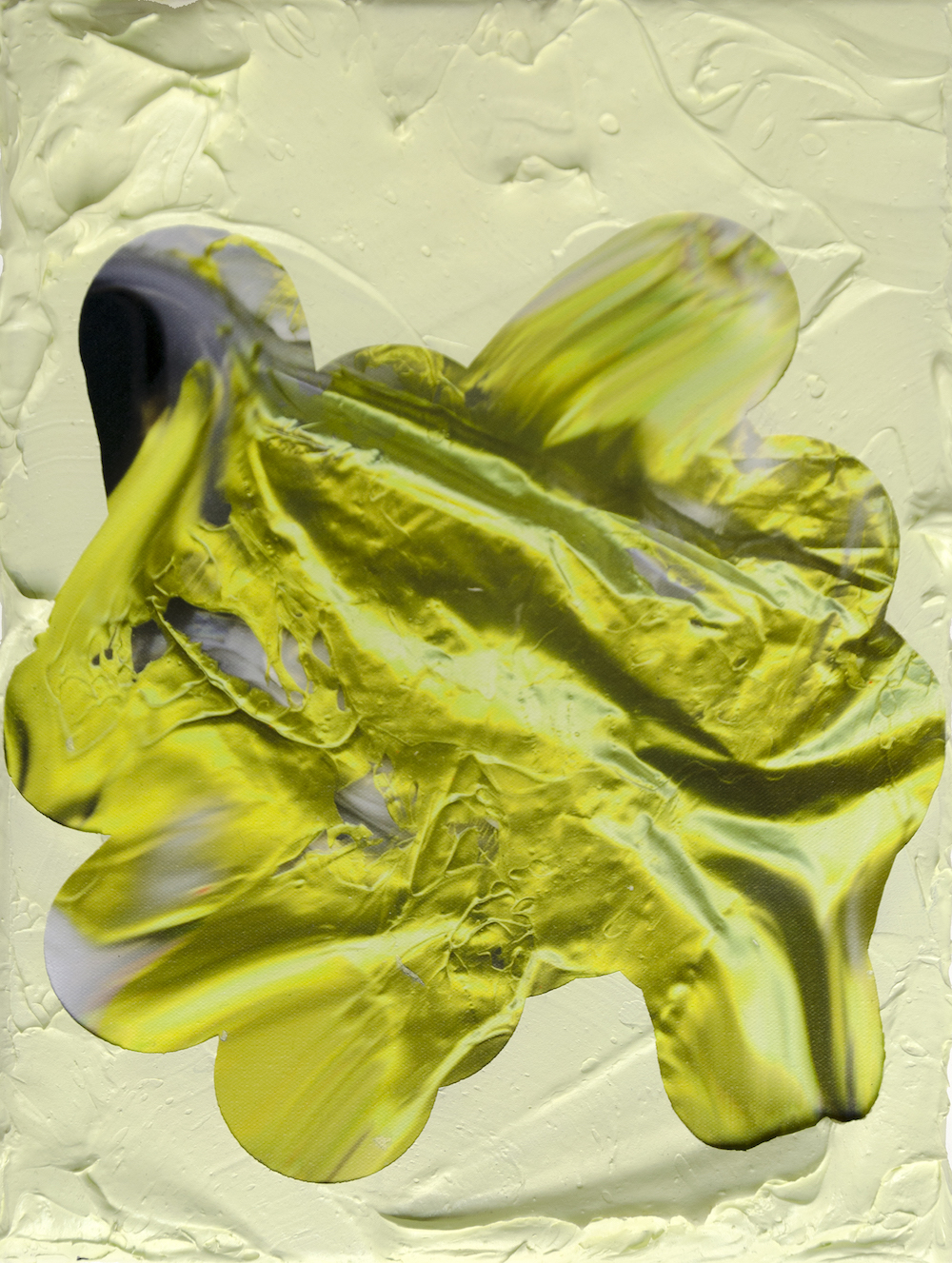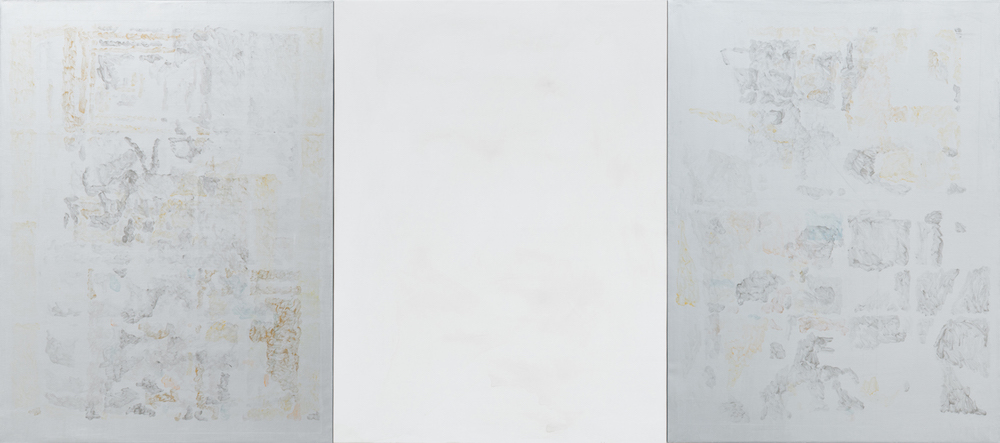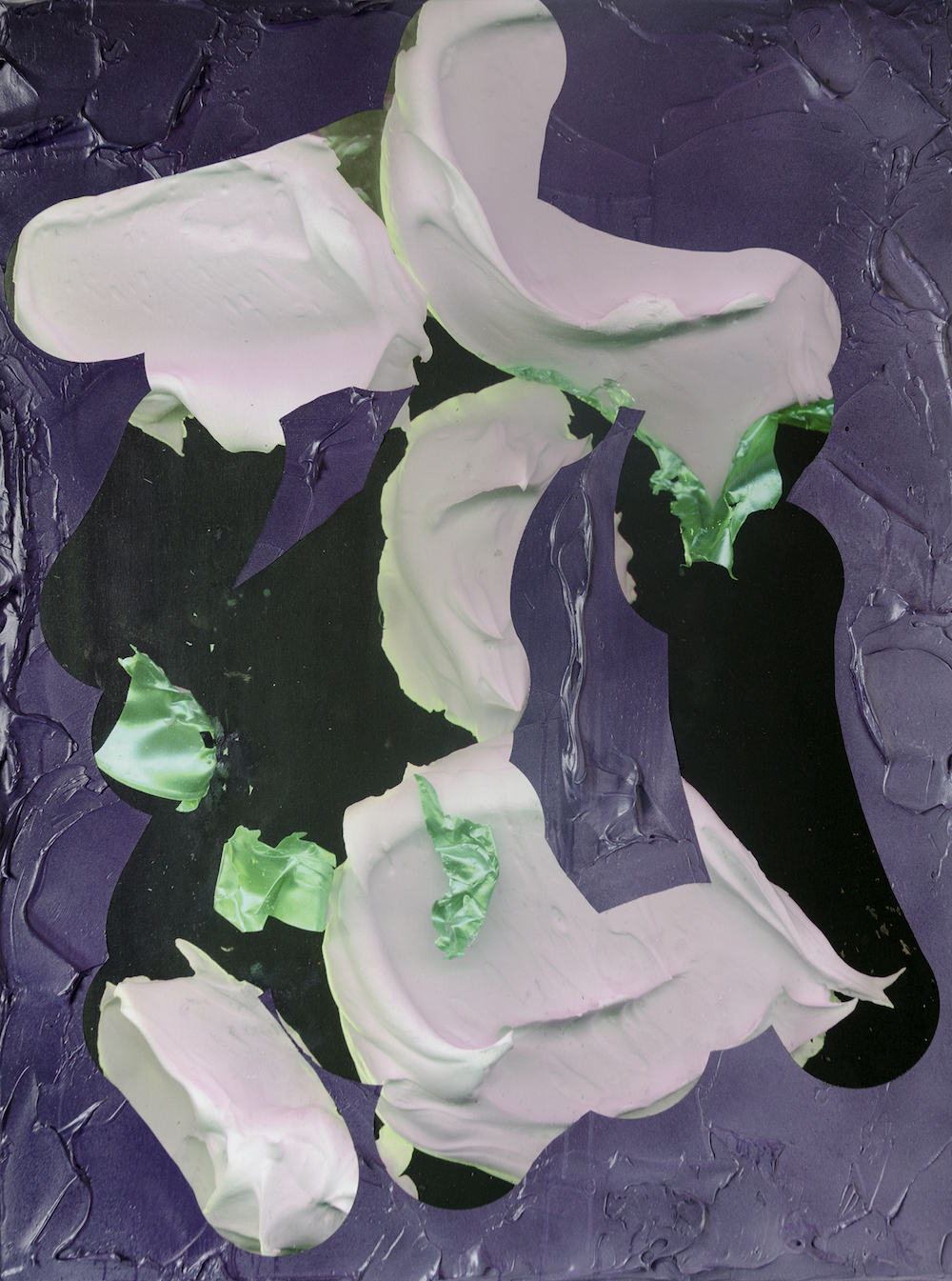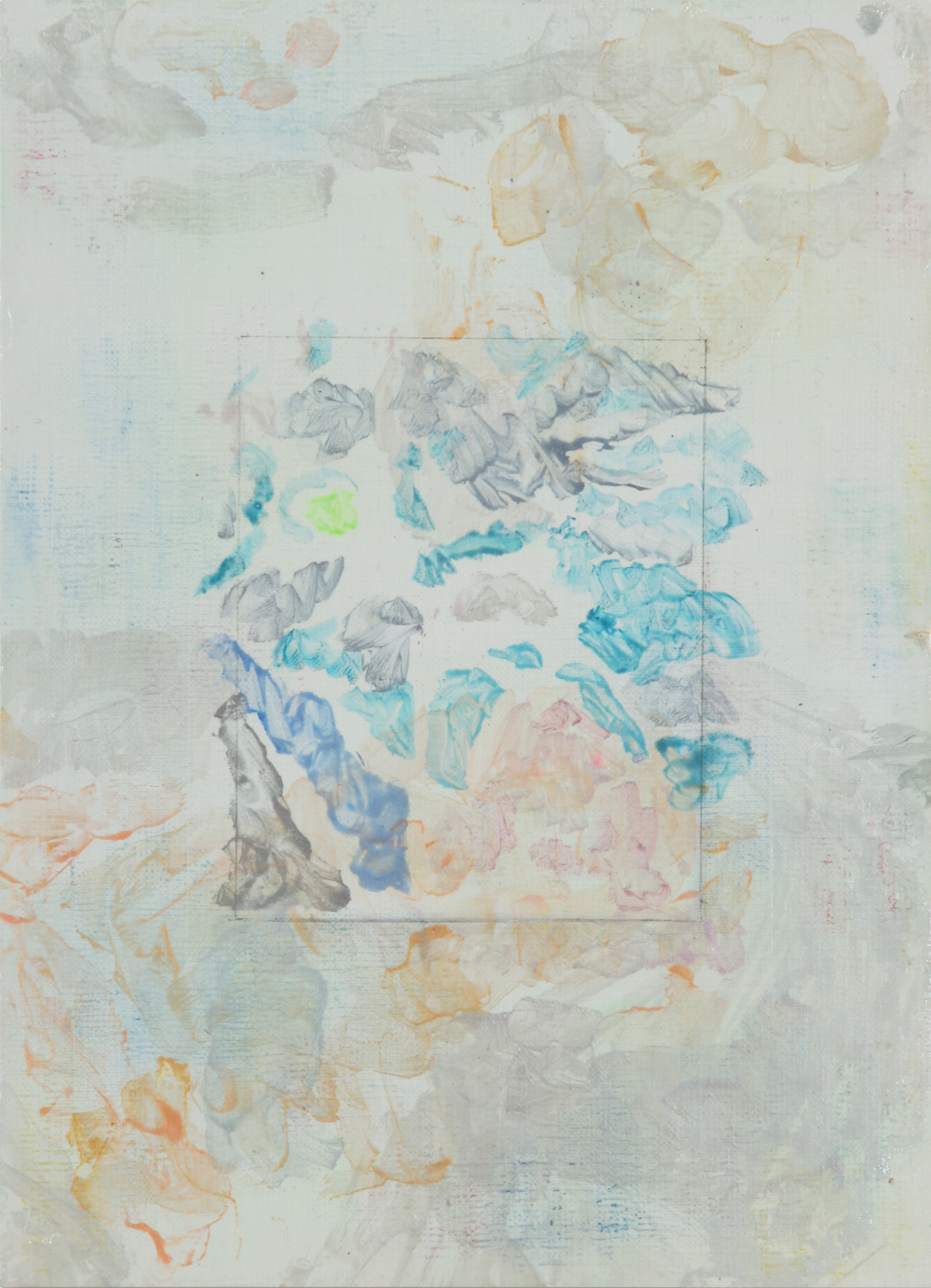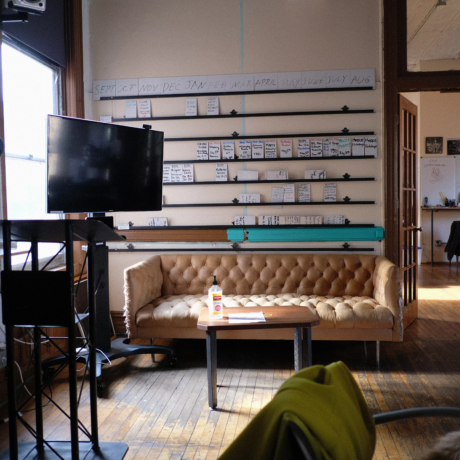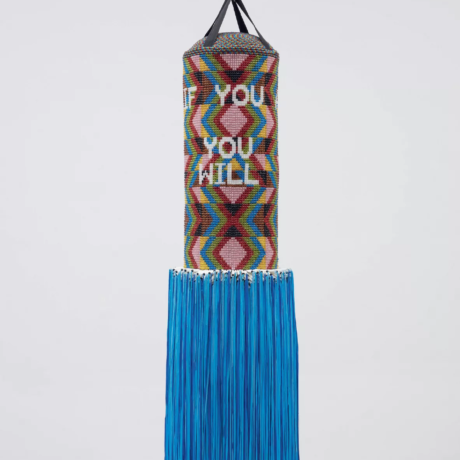The human mind’s ability to recognize is so deeply ingrained, that when it is compromised, we momentarily stall. Kristin Hjellegjerde’s latest exhibition Asemic takes advantage of this moment, bringing together work by a trio of artists; James Alec Hardy, André Hemer and Hiroshi Tachibana.
Blurring the boundaries between the digital and physical, distance and intimacy, each artist examines the journey between the origin and end result. The aim is to shift the viewer into a liminal space, one that lies on the boarders of the asemic. Although differing in their respective practices, each artist is united in the same abstract language.
Most attention grabbing are James Alec Hardy’s imposing digital monoliths – redundant monitors that broadcast eerie chromatic glitches and emit an endless barrage of noise. His sculptural hardwired crosses resemble T.V effigies, where colours are vivid, synthesised and extremely hypnotic. Commenting on the ever-increasing role of television as some kind of ‘reality’, Hardy brings us back to its most basic binary elements, something he calls a lesson in ‘perception management’.
While Hardy shocks with colour, Hiroshi Tachibana uses light. With pallid hues and muted pastels, the Japanese artist loosely traces found-imagery onto polyurethane, before transferring with gel medium onto linen canvas. The abstract painting forms shapes that swirl into obscurity, twist back toward recognition and then gently dissipate once again. There is a Rorschachain element to his work, where meaning becomes subjective.
André Hemer also layers and interweaves visual references. Visceral and vibrant, his works combine digital and physical paint by scanning and re-painting in a cyclic manner. This thickly daubed paint is optically challenging, Hemer’s impasto technique gives his canvases a three-dimensional quality. It’s hard to discern where paint ends and technology takes over.
Our cognitive reflex is so used to interpreting visual languages, that it often attempts to root out meaning where there is none. For all the art world’s sins, perhaps venerating meaning above all else is most problematic. As Asemic suggests, when meaning is removed, we often arrive at new destinations, having found new ways of seeing.
Asemic is showing at Kristin Hjellegjerde until 19 December
